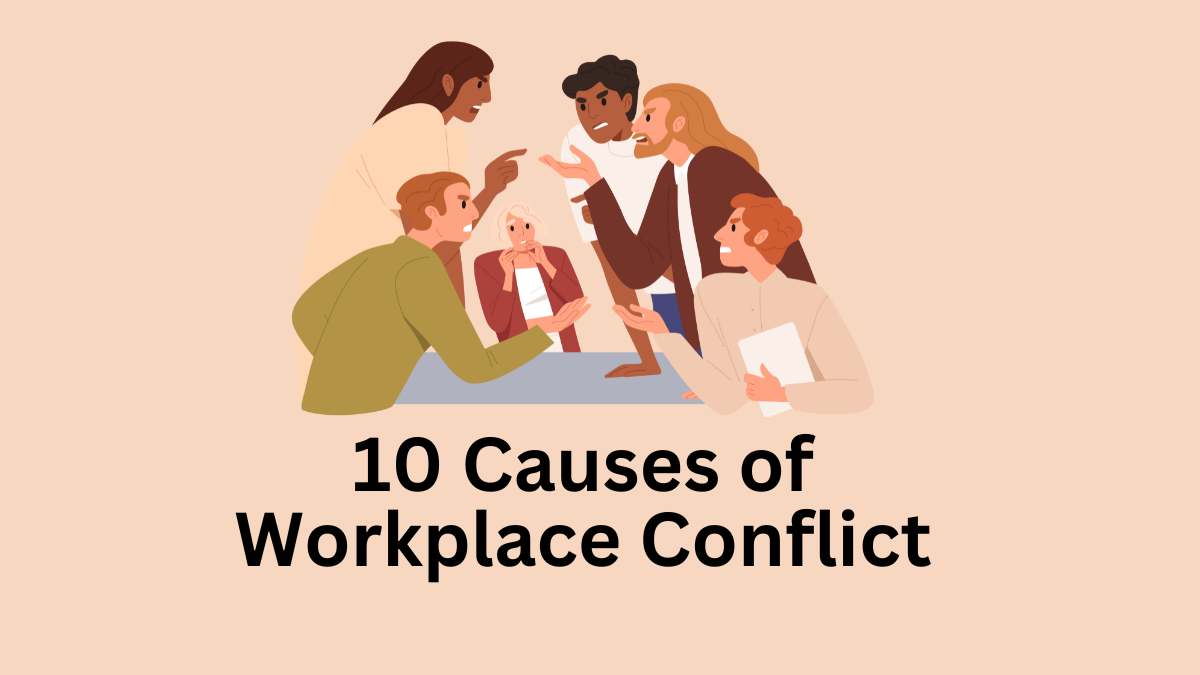Causes of Workplace Conflict
Workplace conflict can arise from a variety of sources, each impacting the organizational environment differently. Here are ten causes of workplace conflict, explained with examples:
Lack of Communication
Poor communication leads to misunderstandings, misinformation, and unmet expectations, which can cause conflict. In a marketing project, a team member misunderstands the project deadline due to vague communication. This results in delays, causing frustration among the team and leading to conflict.
Eg – A project manager fails to inform team members about changes in project scope. This results in confusion and duplicated efforts, causing frustration and conflict among team members who feel their work is being wasted.
Personality Clashes
Differences in personality, work styles, and attitudes can create friction between employees, leading to conflicts.
Eg. Jane prefers a meticulous, detail-oriented approach to her work, while her colleague Mark takes a more spontaneous and flexible approach. Their differing styles lead to frequent disagreements and tension in their collaboration.
Competition for Resources
Limited resources such as budget, office space, or equipment can lead to competition and conflict among employees or departments.
Eg. Two departments need additional staff for different critical projects. The limited budget allows for hiring only one new employee. Both department heads argue their case vigorously, leading to tension and conflict between the teams.
Unclear Roles and Responsibilities
When roles and responsibilities are not clearly defined, employees may experience confusion and overlap in their duties, leading to conflicts.
B. In a small startup, two employees are assigned overlapping tasks without a clear delineation of responsibilities. This results in both employees attempting to take charge of the same projects, leading to frustration and disputes.
Poor Management Practices
Ineffective, inconsistent, or biased management can create an unfair work environment, leading to conflicts.
Eg. A manager shows favoritism towards certain employees, giving them better assignments and more recognition. This perceived unfair treatment leads to resentment and conflict among other team members who feel undervalued.
Read More: What is a Group?
Differing Values and Goals
Employees with different personal values, ethics, or professional goals can experience conflicts when these differences interfere with their work.
Eg. An employee values work-life balance and prefers a strict 9-to-5 schedule, while their manager expects them to stay late frequently to meet deadlines. This clash in values leads to ongoing tension and conflict.
Work Style Differences
Variations in how employees prefer to work – such as differences in time management, organization, and communication – can lead to conflicts.
Eg. One employee prefers to plan and schedule tasks meticulously, while another thrives in a more chaotic, last-minute approach. Their inability to align their work styles leads to frustration and conflict in their team projects.
Job Insecurity
Fear of job loss or uncertainty about the future can create stress and anxiety among employees, leading to conflicts.
Read More: The 10 Functions of Organizational Goals
Eg. During a company-wide restructuring, employees are unsure about their job security. This uncertainty leads to increased stress and competition among colleagues, resulting in conflicts over job performance and responsibilities.
Power Struggles
Employees or departments may vie for control, authority, or influence, leading to conflicts over power dynamics.
Eg. Two senior managers disagree on the strategic direction of their department. Each tries to assert their vision, leading to a power struggle that creates a hostile work environment and divides their teams.
External Stressors
Personal issues, such as family problems or financial stress, can affect an employee’s behavior and interactions at work, leading to conflicts.
Eg. An employee dealing with significant financial problems at home becomes increasingly stressed and irritable at work. This stress manifests in frequent conflicts with colleagues over minor issues, impacting team cohesion and productivity.
Hence, these are the 10 causes of conflict in the workplace with examples.
Read Next: The 4 Methods of Planning in Management

Sujan Chaudhary holds a Bachelor in Business Administration (BBA) degree and is currently pursuing an MBA degree. He loves to share his business knowledge with the rest of the world.
